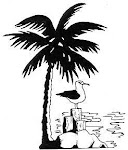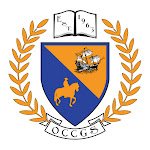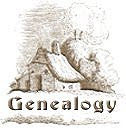The deadly stutter of the machine gun rang over several Civil War battlefields, thanks to the vision and persistence of Abraham Lincoln, but its value as an exterminator was lost on the nation, thanks to a stubborn Federal chief of ordnance.
In early June 1861, Lincoln met the first known salesman of machine guns, J.D. Mills of New York, who led the President to the loft of a carriage shop near Willard’s Hotel. Lincoln was an immediate convert.
The gun was mounted on artillery wheels, and atop its barrel was a hopperful of empty metal cartridge cases that dropped one by one into a revolving cylinder as Lincoln turned a crank. Each cartridge was struck by a firing pin and ejected.
A coffee-mill gun,” Lincoln said. The name stuck for the duration of the war, though Mills insisted upon calling it “The Union Repeating Gun.” Not even the name of its inventor is now known, though it was probably the conception of Edward Nugent or William Palmer, New Yorkers who battled over its patent rights.
A few days after Lincoln’s inspection, the gun was fired at the Washington arsenal before the President, five generals, and three Cabinet members. Some of the generals wanted the gun at once, and Lincoln pressed his chief of ordnance, General James W. Ripley, for action. For months he got none.
Ripley was in his middle sixties, an overworked veteran of almost half a century in the army. He presided over a tiny ordnance office of sixty-four men. He had always been hardheaded; as a lieutenant in the war against the Creeks he had defied Andrew Jackson in behalf of army regulations, and had been threatened with hanging if he did not obey orders. He had served at Fort Moultrie in Charleston Harbor during the first Secession crisis, also under Andrew Jackson.
Ripley believed that the Civil War would be short, and that orthodox weapons were essential. He protested against the flood of new weapon proposals on the ground that the army still lacked conventional small arms. He was secretive to the point of denying personal information to editors of an encyclopedia. After three years of war in which he struggled valiantly to arm the Union forces in his own way, he was forced to retire, derided by the press as an old fogy. He had managed to block many a promising new weapon.
Lincoln was also stubborn. He saw two or three other rapid-firing guns in 1861, and in October, when Salesman Mills returned with ten of his coffee-mill guns, Lincoln bought them without consulting anyone, at a price of $1,300 each. It was the first machine gun order in history.
Not long after, on December 19, 1861, General McClellan bought fifty of these guns on a cost-plus basis; they eventually cost $735 each.
Two weeks later a pair of the guns went into the field for their debut. The officer involved was Colonel John Geary, a seasoned hero of the Mexican War, first mayor of San Francisco, Governor of Kansas, later to become Governor of Pennsylvania. He presided over the first battle test of machine-gun fire, without knowing whether it was in the least effective.
His 28th Pennsylvania Volunteers guarded some twenty four miles of the Potomac around Harpers Ferry, and it is surmised that in one of the frequent skirmishes here in January-February, 1862, some Confederate Soldier became the first victim of the ‘rain of death.”
On March 29, in a later test with the enemy at Middleburg, Virginia, there was still no one to make an accurate estimate of the worth of the guns. But of Middleburg, at least, there is a suggestion of proof. A Captain Bartlett, in a discussion a month later at New York’s Cooper Institute, said that a coffee-mill gun opened fire on Confederate cavalry at 800 yards, cutting it to pieces, and forcing survivors to flee. The Confederates, in any event, did not know what hit them, perhaps because the guns used conventional Minie balls.
Whatever the mysterious captain thought, Colonel Geary was unimpressed, for an April 28 he returned the guns to Washington, saying that after many trials he must reject them as ‘inefficient and unsafe to the operators.”
There were other trials. General John C. Fremont, the colorful explorer who commanded in West Virginia, sent insistent dispatches to Ripley, saying that experiments with the coffee-mill guns were “satisfactory” and demanding that he be sent sixteen of them. Ripley replied characteristically:
Have no Union Repeating Guns on hand, and am not aware that any have been ordered.
When the President was called into the controversy, Ripley countered with the unfavorable report filed by Geary and Fremont was soon gone from his doorstep, defeated by Stonewall Jackson, shuffled in command, and resigned from service. There dangled from this record a mystery, however: When Jackson captured Fremont’s stores at Harpers Ferry, a Richmond newspaper listed as among the loot “17 revolving guns.
In April 1862, from near Yorktown, a New York Post reporter wrote the first account of a machine gun in action. He accurately described the hopper and crank, said that half a dozen of the weapons were used by the 56th New York Volunteers, Colonel Charles H. Van Wyck commanding, and added, “The balls flew thick and fast, and the Yankee invention must have astonished the other side.”
There were occasional mentions of the guns thereafter as McClellan advanced on Richmond. Several Pennsylvania regiments were armed with them. It was June 18, at Golding’s Farm, that George Wills, Company D, 49th Pennsylvania, emerged as the first-known machine gunner, for he got a thigh wound while firing and was embedded in a regimental history.
I few weeks later the Scientific America said a requiem for the weapons. They had “proved to be of no practical value to the Army of the Potomac, and are now laid up in a storehouse in Washington.”
Even afterwards officers ordered them from Ripley, who actually sent some to General Rosecrans in the West, though they were delayed in transit and missed the battle of Chickamauga.
Young Captain David Porter of the Federal Navy, stationed on the Mississippi, ordered four of the guns after a test; at forty yards he hit the head of a keg six out of ten times.
And from the Yazoo River front there was the tale of another test of the coffee-mill guns, when a sliver of lead flew from one of the bullets and struck General W. T. Sherman in the leg, the first reported high-brass casualty of the weapon.
Then belatedly, came a gifted inventor, Dr. Richard J. Gatling, a one-time North Carolina farm boy, who patented a six-barrel machine gun November 4, 1862, and later adapted it to use the new steel-jacketed cartridge. Gatling tried to interest Lincoln, who by then had turned to other weapons, and few of the improved guns got into service. General Ben Butler ordered a dozen, and one of these is said to have helped kill Confederates near Petersburg as the end of the war drew nigh. Three of the weapons helped guard the New York Times building in the draft riots of July 1863.
The guns were to make Gatling rich and famous, even to the point of commemoration in gangster parlance; “gat.” But the doctor bore the taint of being a Copperhead, reputedly a member of the secret society plotting to seize Border States for the Confederacy, and his reputation worked against his gun, especially since he was said to have offered it to the Confederates as well.
It was more than a year after the end of the war, on August 14, 1866, when the United States Army became the world’s first to adopt a machine gun, Gatling’s.







